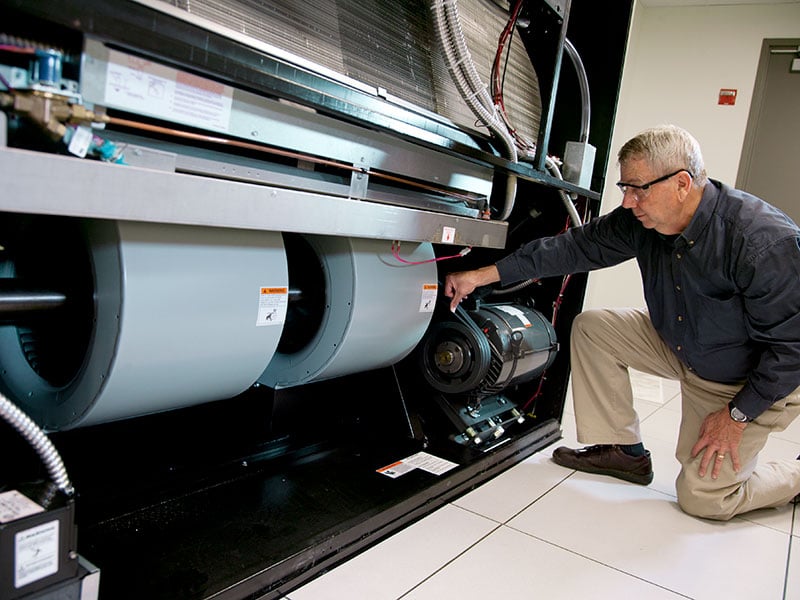The use of intelligent controls brings high-level supervision to multiple cooling units and is an excellent approach to achieving energy efficiency goals. In fact, Vertiv has found that a unified thermal management system with intelligent control capability can improve efficiency by 10-20 percent. However, to realize the advantages of intelligent controls, the controls must be optimized. The best people to assist are factory-trained, data center-focused technicians. Such optimization matches cooling to the load and room conditions, and ensures peak system performance based on the specific application. This creates a fully integrated thermal management system that supports the entire data center infrastructure. To achieve the best results and the greatest efficiency gains, follow these four steps to optimize thermal control in your data center:
Step 1: Work with precision cooling experts.
The first step to optimize thermal control is to work with a specialist to review your existing infrastructure. This typically includes an on-site consultation in which a technician walks with you through the data center to gain a better understanding of the goals and priorities for the critical infrastructure. The technician will review various thermal controls and make recommendations for optimizing specific thermal controls, including temperature and humidity set points, networking, and teamwork modes including Optimized Aisle Control.
Step 2: Adjust temperature and humidity set points or settings.
IT systems are sensitive to extreme variations in temperature and humidity. Adjusting the type of control, modifying set points, and adjusting the tolerance help ensure proper operation of the cooling system. It also helps to reduce energy consumption, improve compressor life, and reduce “fighting” between units due to excessive humidification or dehumidification.
Step 3: Set advanced networking and teamwork controls.
Advanced networking and teamwork controls help account for non-uniform rack densities across the data center. Such controls enable cooling based on conditions at the servers, and they also allow multiple cooling units to work together as a single system, thus optimizing efficiency. These advanced controls need to be set based on equipment type, options utilized, thermal load, location, and other factors in order to eliminate excessive dehumidification, maximize free cooling, and cut down on wear due to the start and stop of compressors. The technician will check the network connections and configure the appropriate IP address for the mechanical network. He or she will also:
- Determine the correct teamwork mode based on room design and input
- Configure appropriate teamwork mode, lead/lag-standby, rotation, and cascade
- Confirm proper operation
- Document the teamwork settings in the electronic report
Step 4: Configure Optimized Aisle Control.
If the units in the data center use Liebert® iCOM™ controls, units can share sensory data and provide coordinated cooling and humidity control. They also have the ability to use a combination of return, supply, and remote temperature sensors, along with underfloor pressure sensors, to enable Optimized Aisle Control. This allows for the greatest control of the temperature and amount of air being delivered to the server inlets. Efficiency improvements of 10-30 percent can be achieved, depending on row or aisle configuration, aisle containment, and proper set-up. When these controls are optimized properly by a factory-trained technician, it provides more capacity with similar levels of power consumption than if the controls were configured by the customer alone. The technician optimizing these controls will:
-
Recommend sensor locations
-
Help with configuring remote sensors and teamwork mode, and setting the sensor and control type
-
Confirm that the sensor array is properly installed and configured
-
Document all settings in the report
Make your investment pay off.
Setting up the features of intelligent thermal managementsystem controls takes knowledge and time. But it is critical to boosting overall efficiency, extending equipment life, and ensuring the best possible performance and availability. While optimizing thermal management system controls when new equipment is installed offers the most benefits, optimization can be completed at any point. However, whenever you choose to optimize, be sure to work with a technician who specializes in data center precision cooling equipment and technology. Such expertise will help ensure peak performance, maximum efficiency, and the greatest reduction in your operating costs.



